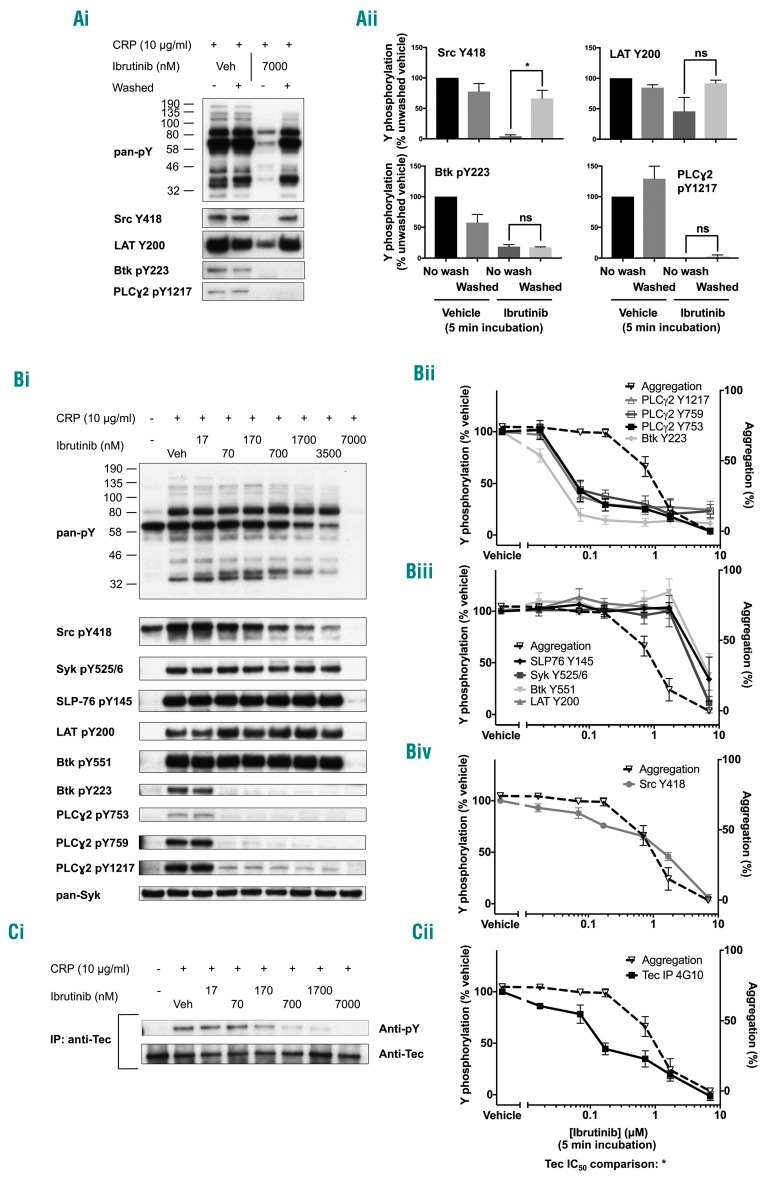Figure 3.
Ibrutinib dose-dependently inhibits glycoprotein VI-mediated signaling. (A) Eptifibatide (9 μM)-treated washed human platelets (4×108/mL) were stimulated with CRP (10 μg/mL for 180 s) followed by lysis with 5X SDS reducing sample buffer. Prior to addition of agonist, platelets were pre-incubated with either ibrutinib or vehicle (DMSO). Some platelets underwent two further washing steps prior to addition of agonist. (i) Whole cell lysates were then separated by SDS-PAGE and western blotted with the stated antibodies for whole cell phosphorylation, kinases and proteins downstream of GPVI. Blots are representative of three experiments. (ii) Percentage tyrosine phosphorylation as compared to that of non-washed vehicle platelets was measured and is represented as the mean ± SEM of three identical experiments. (Bi) Washed platelets were treated as in (A) but with a wider range of ibrutinib doses. (ii - iv) The percentage of tyrosine phosphorylation as compared to that of vehicle-treated platelets was measured and is represented as the mean ± SEM of four identical experiments. The dose-response curve for inhibition of washed platelet aggregation from Figure 2Aii is shown as a dotted line to enable comparison. (C) Eptifibatide (9 μM)-treated washed human platelets (8×108/mL) were stimulated with CRP (10 μg/mL for 180 s) followed by lysis with 2X ice cold lysis sample buffer. Lysates were pre-cleared and Tec was immunoprecipitated before addition of SDS reducing sample buffer and separation by SDS-PAGE and western blotted with the anti-pY antibody 4G10. Membranes were stripped and then reprobed with the pan-Tec antibody. (i) The trace is representative of three identical experiments. (ii) The percentage of tyrosine phosphorylation as compared to that of vehicle-treated platelets was measured and is represented as the mean ± SEM of three identical experiments. *P<0.05. ns = non-significant.

